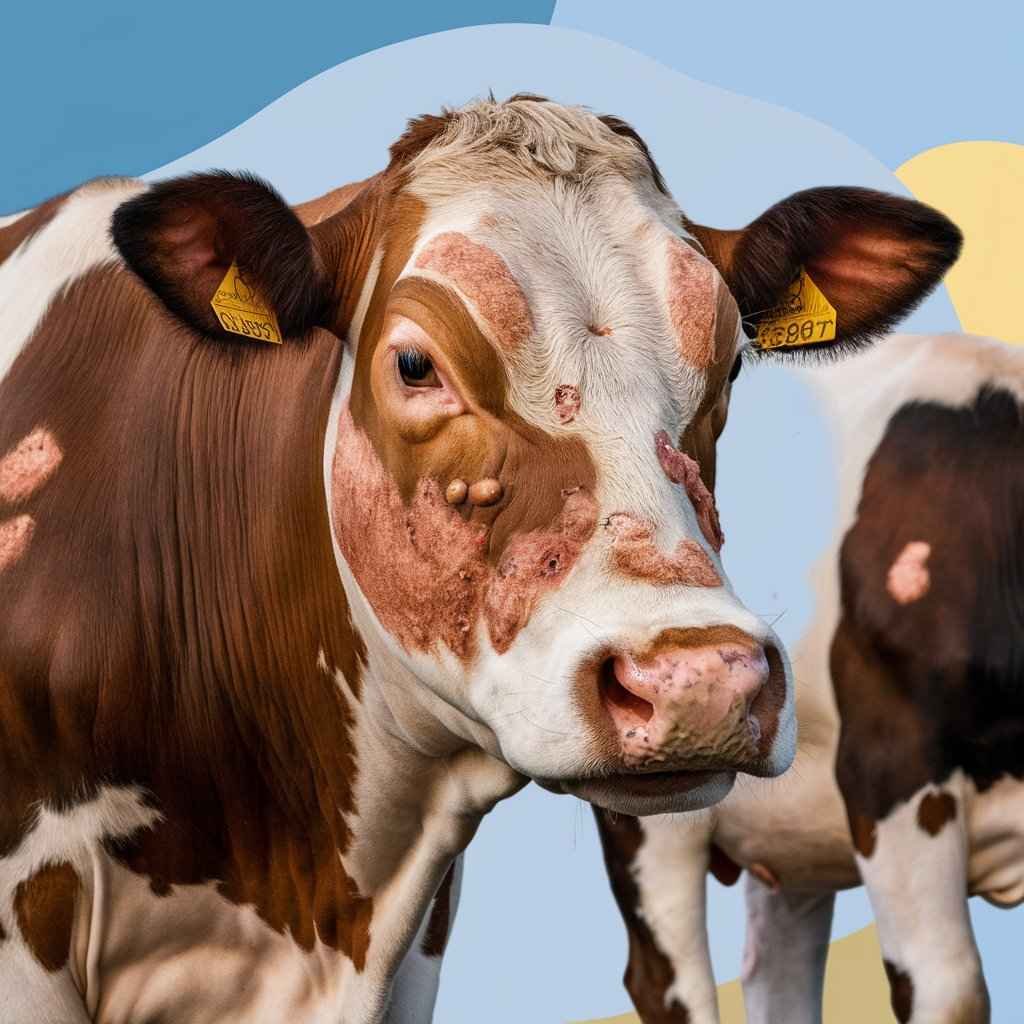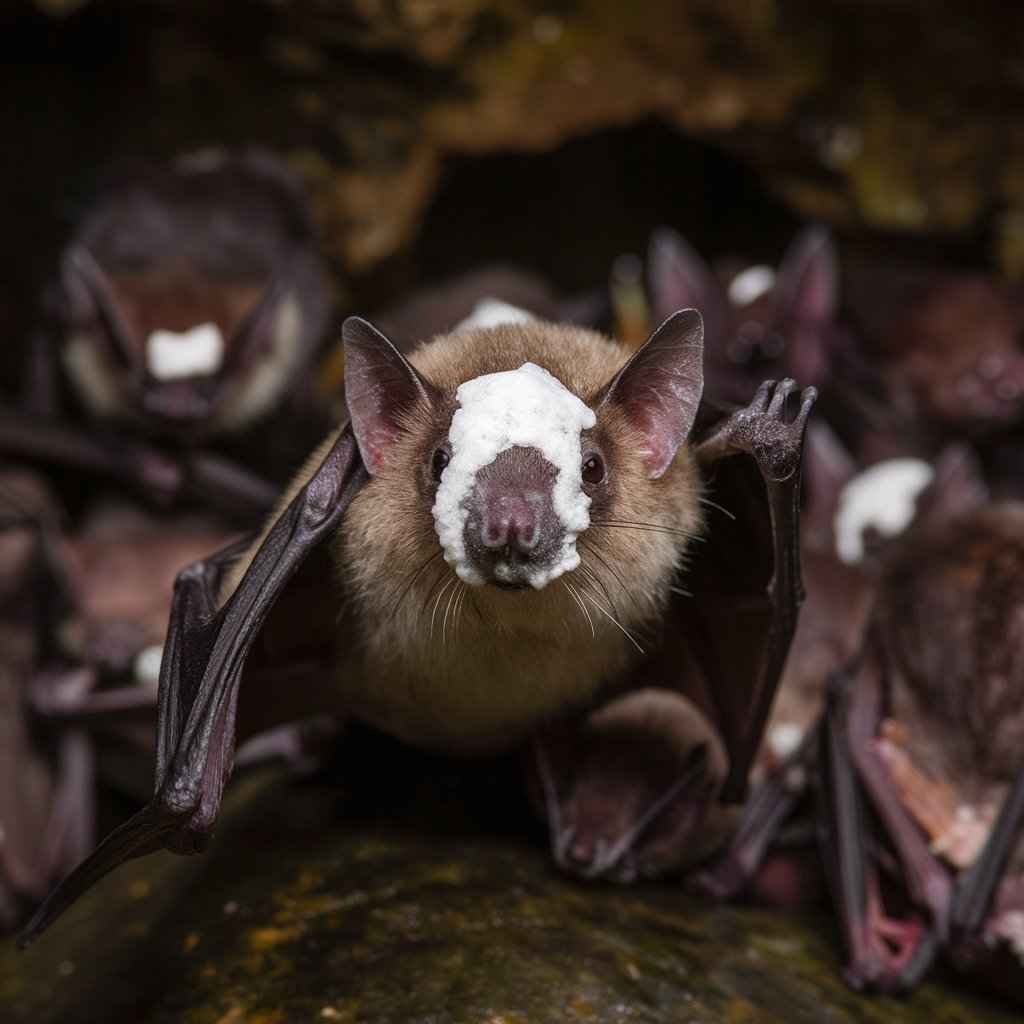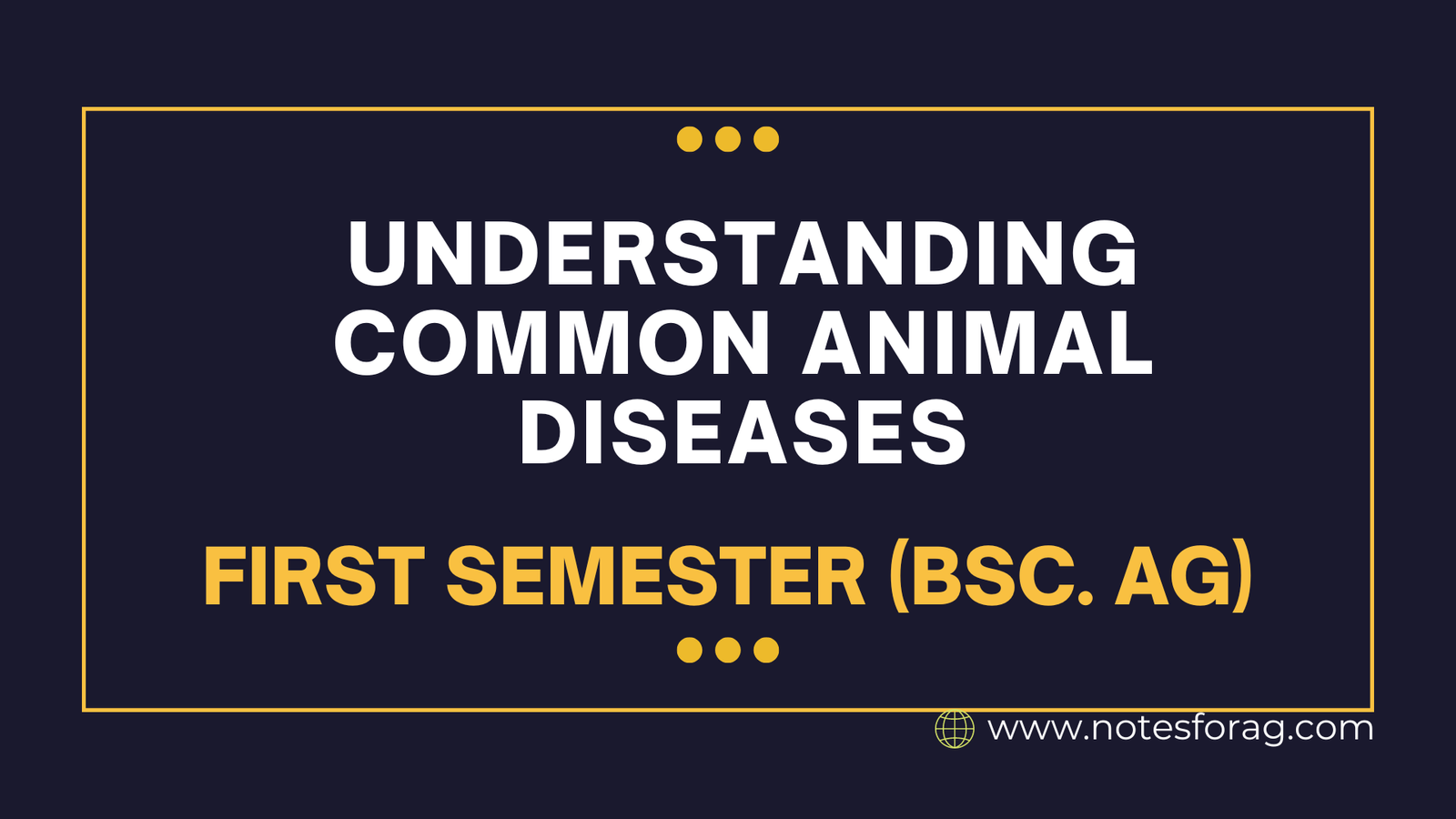Animal diseases have the potential to seriously affect the health and welfare of many different kinds of animals, including livestock, aquatic life, and companion animals. Frequent ailments encompass viral infections such as feline leukemia, avian influenza, and canine parvovirus; bacterial ailments like equine strangles, swine erysipelas, and bovine mastitis; parasitic conditions like coccidiosis in poultry and heartworm in dogs; and prion illnesses like chronic wasting disease in deer and bovine spongiform encephalopathy.
To reduce the effects of these diseases and maintain animal health, effective preventive and management techniques are essential. These include vaccination, good hygiene habits, and timely veterinary care.
Table of Contents
Introduction to Common Animal Diseases
For farmers, animal enthusiasts, and pet owners alike, it is basic to understand common animal diseases. People can prevent illnesses from affecting their animals by being aware of these diseases and taking preventative action. Aside from reducing suffering and keeping minor health issues from worsening, early diagnosis and prompt treatment of diseases can greatly improve an animal’s quality of life and lifespan.
The same diseases and health issues can affect animals as they can people. Chronic illnesses like diabetes and arthritis can be among them, as well as infectious disorders like canine parvovirus and feline leukemia. Treatment success may significantly vary depending on early detection of certain conditions’ indications and symptoms. Pet owners and caregivers may miss symptoms since they are frequently mild and difficult to identify. A crucial component of providing animals with ethical care is being aware of any potential health problems.
In terms of the identification, management, and avoidance of animal illnesses, veterinarians are invaluable. For any new health concerns to be quickly detected and treated, routine veterinarian examinations are essential.
In conclusion, the foundation of providing successful animal care is a thorough grasp of prevalent animal diseases. Our pets can live longer, healthier lives if we put an emphasis on regular veterinary care, early identification, and education.
Animal diseases can vary widely depending on the species and environment. Here are some common diseases affecting different types of animals:
Common Animal Diseases
Companion Animals (Dogs and Cats)
1. Canine Diseases:
- Parvovirus: Extremely contagious and frequently lethal, particularly in puppies.
- Distemper: A viral illness that affects the central nervous system, the gastrointestinal tract, and the respiratory system.
- Heartworm disease: lung and heart-related parasitic worms spread by mosquitoes.
- Kennel Cough (Bordetella): A coughing fit brought on by a respiratory illness.
- Lyme disease: Caused by fever, lassitude, and joint discomfort, this disease is carried by ticks.
2. Feline Diseases:
- Feline Leukemia Virus (FeLV): A virus that can cause immunological system suppression and malignancy.
- Feline Immunodeficiency Virus (FIV): It impairs a cat’s immune system in a manner akin to that of HIV in humans.
- Upper respiratory infections (URIs): Frequently brought on by viruses such as calicivirus or herpesvirus.
- Feline Infectious Peritonitis (FIP): A deadly condition brought on by a feline coronavirus mutation.
- Diabetes Mellitus: Relates to abnormalities in the body’s regulation of blood sugar.
Livestock (Cattle, Sheep, Pigs, Goats)
1. Bovine Diseases:

- Foot-and-Mouth Disease (FMD): Animals with cloven hooves are susceptible to this extremely contagious virus.
- Bovine Spongiform Encephalopathy: A neurodegenerative illness often known as Mad Cow Disease or BSE.
- Mastitis: An infection-related mammary gland inflammation.
- Johne’s Disease: Prolonged diarrhea and substantial weight loss due to an intestinal infection.
- Bovine Respiratory Disease Complex (BRDC): A collection of respiratory disorders.
2. Sheep and Goat Diseases:
- Scrapie: An incurable degenerative illness of the central nerve system.
- Foot Rot: Lameness brought on by a bacterial infection.
- Caseous Lymphadenitis (CL): An infection caused by bacteria that results in lymph node abscesses.
- Peste des Petits Ruminants (PPR): A viral illness that can result in pneumonia, diarrhea, fever, and ulcers.
3. Swine Diseases:
- Porcine Reproductive and Respiratory Syndrome (PRRS): A viral illness that impairs breathing and causes problems with reproduction.
- African Swine Fever (ASF): A highly transmissible viral illness that has a significant death rate.
- Swine Influenza: An influenza A virus-related respiratory illness.
- Erysipelas: Bacterial infection that results in arthritis and skin sores.
- Porcine Epidemic Diarrhea (PED): Severe diarrhea and dehydration are caused by this virus.
Poultry (Chickens, Turkeys, Ducks)
- Newcastle disease: A virus that affects the digestive, neurological, and respiratory systems.
- Marek’s Disease: A viral illness that results in paralysis and malignancies.
- Infectious Bronchitis: A respiratory virus.
- Coccidiosis: An intestinal tract parasite illness.
Horses
- Equine influenza: A viral respiratory illness that spreads quickly.
- Equine herpesvirus (EHV): May induce neurological problems, respiratory illnesses, and abortions.
- Laminitis: An infection of the tissues within the hoof.
- Colic: A general word for digestive problems that result in pain in the abdomen.
- Strangles: An infection with bacteria that results in lymph node abscesses.
Wildlife

- Chronic Wasting Disease (CWD): Moose, elk, and deer are susceptible to this prion disease.
- Rabies: A human-transmissible virus that affects the central nervous system.
- White-Nose Syndrome: A fungal disease that kills a lot of bats.
- Mycoplasmosis: A bacterial illness that affects several kinds of birds.
Aquatic Animals (Fish, Amphibians)
- Ichthyophthirius multifiliis (Ich): Fish with white patches due to a parasite illness.
- Koi Herpesvirus (KHV): A prevalent carp and koi herpesvirus illness.
- Columnaris: A bacterial illness that causes sores on fish’s skin and gills.
- Red Leg Syndrome: An illness with bacteria that causes the legs and abdomen of frogs to turn red.
Prevention and Management
Vaccinations on a regular basis, appropriate diet, timely veterinarian care, parasite management, and adequate hygiene are all important in preventing animal diseases. In order to manage and limit the spread of infections, quarantine procedures, biosecurity procedures, and routine health monitoring are crucial.
Frequently Asked Question(FAQ)
What are some common animal diseases?
Canine parvovirus and distemper, feline leukemia, foot-and-mouth disease, avian influenza, colic in horses, chronic wasting disease in wildlife, and ich in fish are examples of common animal diseases. Vaccination, excellent hygiene, and timely veterinarian care are essential components of effective prevention and management.
How do diseases occur in animals?
Animal diseases can be caused by infections with bacteria, viruses, parasites, fungus, or by environmental, dietary, or genetic factors. Insect bites, contaminated food or drink, direct contact, and exposure to sick animals are some of the ways that the disease can spread.
Related Articles

